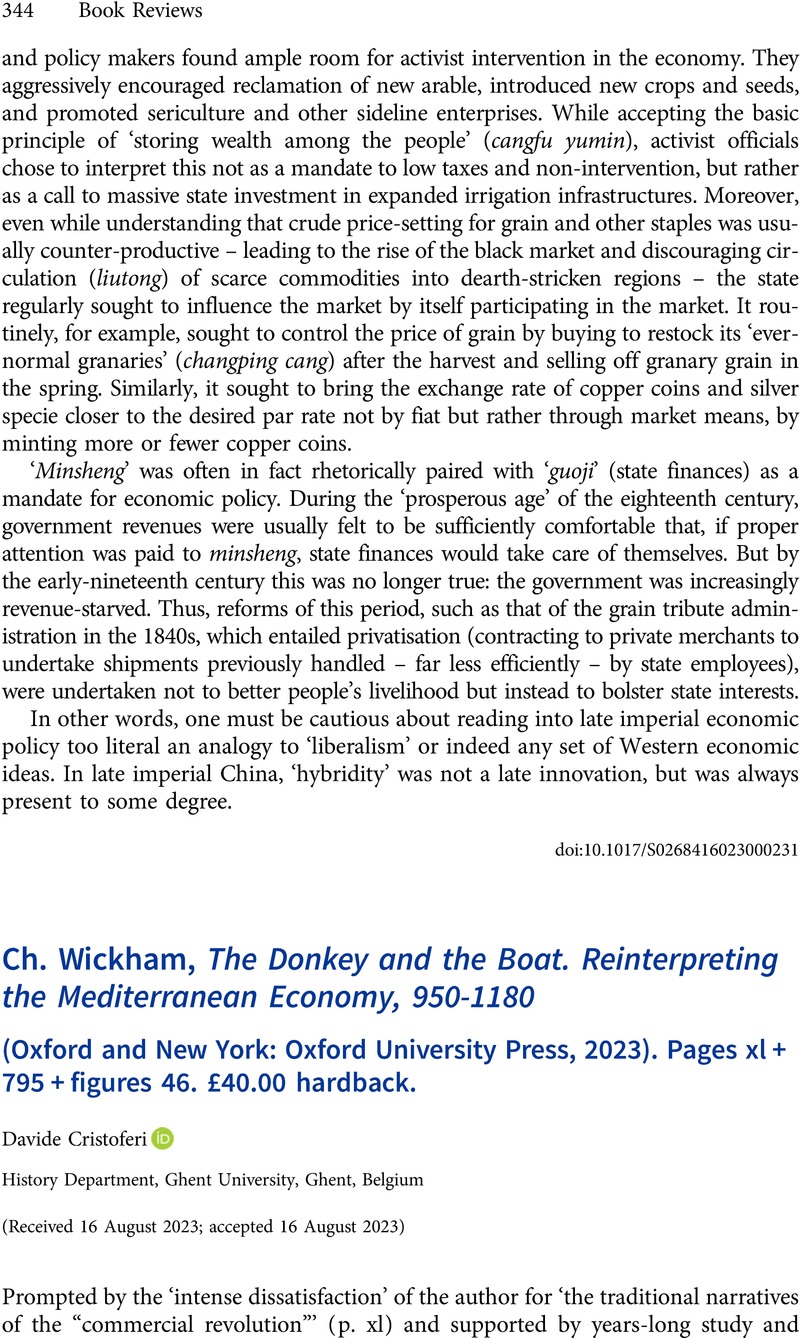No CrossRef data available.
Article contents
Ch. Wickham, The Donkey and the Boat. Reinterpreting the Mediterranean Economy, 950-1180 (Oxford and New York: Oxford University Press, 2023). Pages xl + 795 + figures 46. £40.00 hardback.
Review products
Ch. Wickham, The Donkey and the Boat. Reinterpreting the Mediterranean Economy, 950-1180 (Oxford and New York: Oxford University Press, 2023). Pages xl + 795 + figures 46. £40.00 hardback.
Published online by Cambridge University Press: 12 October 2023
Abstract
An abstract is not available for this content so a preview has been provided. Please use the Get access link above for information on how to access this content.

- Type
- Book Review
- Information
- Copyright
- Copyright © The Author(s), 2023. Published by Cambridge University Press



